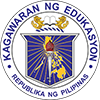
The Department of Education- Central Visayas Office continues to soar high for excellence in governance just as how its mother agency, the Department of Education- Central Office has withstood the test of several decades. Since its establishment, all of its regional offices vowed for a just, systematic procedures, and genuine service for the clients. After all, this is what public service is and should be all about.
The office is divided into eight (8) divisions, namely: Administrative Division (AD), Curriculum, Learning and Management Division (CLMD), Education Support Services Division (ESSD), Quality Assurance Division (QAD), Finance Division (FD), Human Resource Development Division (HRDD), Field Technical Assistance Division (FTAD) and Policy, Planning and Research Division (PPRD). The Office of the Regional Director heads most of the transactions of the agency. The Regional Director approves all transactions on issuance of Certification, Authentication and Verification (CAV) of Academic Records for Public and Private Elementary, Secondary Schools, on issuance of Special Order (S.O.) for Graduation in Private Secondary Schools, on application for Government Authority (Permit and Recognition), on application for Correction of Name and Date of Birth, on application for ERF, Reclassification and Conversion of Positions, Retirement/ Terminal Leave Claim, on application for Authority to Travel Abroad, on application for GSIS Retirement/Survivorship/Separation/Total and Permanent Disability Claim, and on Terminal Pay Application. All these are systematically spearheaded by the Regional Office to cater for the needs of its workers and clienteles. Communications are sent via fax machines, electronic mails, and mails. These are received through Document Tracking numbers and are managed in the HSRIMS System – a software program initiated by the office itself to document all communications received in the offices of the Regional Director and in the Records Section – a way to hamper inconvenience both for the receiver and the clients. Furthermore, productions from planning to full implementation of locally initiated projects and programs of the agency are also tended with the utmost consideration and attention for the agency strives to become the best support group in advocating ‘Basic Education for All’. This prime advocacy has led the CLMD to strive for excellence in the enhancement of the curriculum and learning management of all schools both in the private and public sector. The HRDD intensifies its collaboration with other NGOs and other partner agencies merely to develop and train more school leaders and teachers. To qualify for the concept of excellence and good governance, the QAAD and PPRD investigate and plans respectively for improving more programs and projects and reducing and mitigating grey areas of both the administrative and school systems. The ESSD and the FTAD uphold the community extension services of the agency. They serve as the ‘leg’ and ‘arms’ for the clients. Hence, the efforts for excellence in good governance have been pursued.
The opportunity to extend support and services to the public is admirable and at the same time one brave thing to do. Procuring excellence in good governance impacts a sense of fulfillment and satisfaction. However, keeping it is more fulfilling and satisfying. Several decades have already passed and yet the fulfillment and satisfaction of both the clients and the personnel have never gone out of the wind because the opportunity has been kept. It went on one right track.
Organizational Structure



